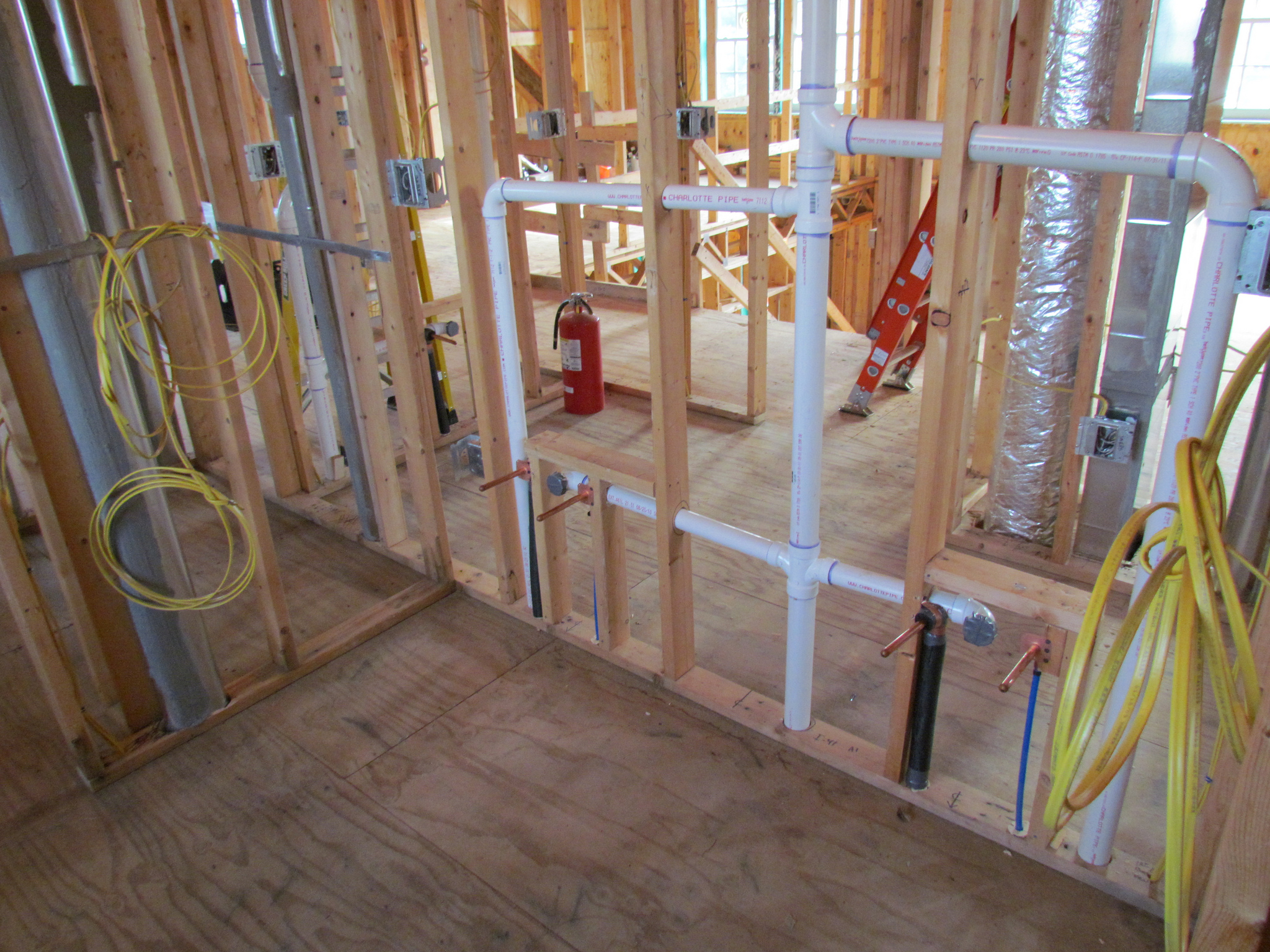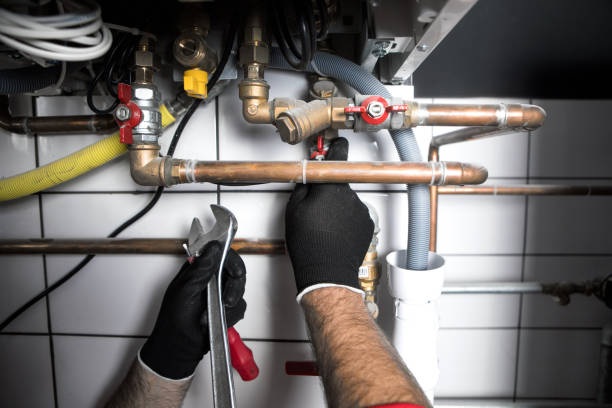How do you really feel when it comes to Understanding Your Home's Plumbing Anatomy?

Comprehending how your home's plumbing system works is crucial for each house owner. From providing clean water for drinking, cooking, and bathing to securely eliminating wastewater, a well-kept plumbing system is essential for your family members's wellness and convenience. In this detailed guide, we'll discover the detailed network that comprises your home's plumbing and offer pointers on upkeep, upgrades, and handling usual problems.
Introduction
Your home's pipes system is more than simply a network of pipes; it's a complex system that guarantees you have access to tidy water and efficient wastewater elimination. Knowing its parts and just how they interact can help you protect against expensive fixings and make sure whatever runs smoothly.
Standard Parts of a Pipes System
Pipes and Tubes
At the heart of your plumbing system are the pipelines and tubing that lug water throughout your home. These can be made from various products such as copper, PVC, or PEX, each with its advantages in regards to durability and cost-effectiveness.
Components: Sinks, Toilets, Showers, etc.
Components like sinks, bathrooms, showers, and bath tubs are where water is utilized in your house. Understanding just how these fixtures link to the pipes system assists in detecting problems and preparing upgrades.
Valves and Shut-off Points
Shutoffs control the circulation of water in your pipes system. Shut-off valves are vital during emergencies or when you require to make repairs, enabling you to separate parts of the system without disrupting water circulation to the whole house.
Water System System
Key Water Line
The main water line links your home to the metropolitan supply of water or a personal well. It's where water enters your home and is dispersed to various fixtures.
Water Meter and Stress Regulatory Authority
The water meter steps your water usage, while a pressure regulatory authority makes certain that water flows at a risk-free stress throughout your home's pipes system, preventing damage to pipelines and components.
Cold Water vs. Hot Water Lines
Comprehending the difference in between cold water lines, which provide water directly from the primary, and warm water lines, which carry heated water from the hot water heater, aids in troubleshooting and planning for upgrades.
Drain System
Drain Pipes Piping and Traps
Drain pipelines bring wastewater far from sinks, showers, and commodes to the sewer or septic tank. Traps stop sewage system gases from entering your home and additionally catch particles that can create obstructions.
Ventilation Pipes
Ventilation pipes allow air into the drainage system, avoiding suction that might reduce drainage and trigger catches to vacant. Proper ventilation is important for preserving the honesty of your pipes system.
Importance of Appropriate Drain
Making certain proper drainage stops back-ups and water damages. Routinely cleaning up drains pipes and keeping catches can prevent costly repair work and prolong the life of your pipes system.
Water Furnace
Kinds Of Hot Water Heater
Hot water heater can be tankless or traditional tank-style. Tankless heaters heat water as needed, while storage tanks save warmed water for immediate use.
How Water Heaters Attach to the Pipes System
Recognizing just how hot water heater link to both the cold water supply and hot water distribution lines aids in detecting problems like inadequate hot water or leaks.
Upkeep Tips for Water Heaters
Consistently purging your water heater to eliminate debris, inspecting the temperature setups, and checking for leakages can extend its lifespan and boost power effectiveness.
Common Pipes Problems
Leaks and Their Causes
Leakages can happen due to maturing pipelines, loose fittings, or high water stress. Dealing with leaks without delay stops water damage and mold development.
Blockages and Blockages
Obstructions in drains and toilets are usually triggered by flushing non-flushable things or an accumulation of grease and hair. Making use of drain displays and being mindful of what drops your drains can prevent obstructions.
Signs of Pipes Issues to Watch For
Low tide pressure, slow-moving drains, foul odors, or abnormally high water expenses are signs of prospective plumbing troubles that ought to be resolved immediately.
Plumbing Upkeep Tips
Regular Assessments and Checks
Schedule yearly plumbing assessments to catch concerns early. Look for indicators of leaks, deterioration, or mineral buildup in taps and showerheads.
DIY Upkeep Tasks
Simple jobs like cleansing faucet aerators, looking for toilet leakages using color tablet computers, or protecting revealed pipes in cool climates can stop significant plumbing concerns.
When to Call a Professional Plumbing Technician
Know when a pipes issue needs specialist knowledge. Trying intricate repair work without correct knowledge can result in more damages and higher repair work expenses.
Updating Your Pipes System
Reasons for Updating
Updating to water-efficient fixtures or replacing old pipelines can boost water quality, minimize water costs, and increase the value of your home.
Modern Pipes Technologies and Their Advantages
Explore innovations like clever leakage detectors, water-saving toilets, and energy-efficient water heaters that can conserve cash and decrease ecological influence.
Cost Considerations and ROI
Determine the ahead of time costs versus long-term cost savings when taking into consideration pipes upgrades. Many upgrades pay for themselves with minimized energy costs and less repair services.
Ecological Impact and Conservation
Water-Saving Fixtures and Home Appliances
Setting up low-flow taps, showerheads, and commodes can dramatically reduce water usage without compromising performance.
Tips for Decreasing Water Use
Easy routines like dealing with leaks quickly, taking much shorter showers, and running complete loads of laundry and dishes can conserve water and lower your utility bills.
Eco-Friendly Plumbing Options
Consider sustainable plumbing materials like bamboo for floor covering, which is durable and eco-friendly, or recycled glass for kitchen counters.
Emergency situation Readiness
Actions to Take Throughout a Pipes Emergency situation
Know where your shut-off shutoffs lie and exactly how to shut off the water system in case of a ruptured pipe or major leak.
Significance of Having Emergency Contacts Handy
Keep contact details for neighborhood plumbing professionals or emergency situation services readily available for quick feedback throughout a pipes dilemma.
DIY Emergency Fixes (When Applicable).
Temporary solutions like making use of air duct tape to patch a leaking pipe or positioning a container under a leaking faucet can minimize damages till an expert plumbing arrives.
Conclusion.
Recognizing the composition of your home's plumbing system empowers you to keep it successfully, saving time and money on fixings. By adhering to routine maintenance regimens and remaining informed concerning modern-day plumbing technologies, you can guarantee your plumbing system operates successfully for many years to come.
Understanding Your Home Plumbing System: A Comprehensive Guide
Plumbing System: The Lifeline of Your Home
At its core, the plumbing system is designed to perform two primary functions: bring fresh water into your home and remove wastewater. The system is a network of pipes, fixtures, and other components that transport water and sewage. Residential plumbing systems include potable water supply lines, drain-waste-vent (DWV) systems, and various plumbing fixtures that make water use in daily tasks possible.
Key Components:
Water Supply: This part of your plumbing system brings municipal water into your home, passing through the main water supply line. It s responsible for supplying all water needs, from drinking to bathing.
Drainage System: It carries waste and water away from your home to the sewer or septic system. This system includes all the piping within your home that leads to external sewage or septic systems.
Vent System: An essential yet often overlooked component, the vent system allows sewer gases to escape and lets air into the drainpipes, ensuring water and waste move correctly through the system.
Fixture: More Than Just Taps and Toilets
Plumbing fixtures are the most interactive parts of the plumbing system, including faucets, showers, toilets, and sinks. Each fixture is connected to the plumbing system and plays a role in either the delivery of freshwater or the disposal of waste and wastewater.
Types of Fixtures:
Faucets and Sinks: Used for washing hands, dishes, and other daily water needs.
Toilets: Dispose of human waste through the sewage system.
Bathtubs and Showers: Provide bathing facilities, requiring both hot and cold water supply.
Water Supply: The Source of Life
The water supply system is a critical component, ensuring that potable water is available throughout your home for various uses, including drinking, cooking, and cleaning. This system consists of pipes that distribute water to different parts of the house, controlled by valves to regulate the water flow.
Types of Plumbing: Materials and Methods
Various types of plumbing systems and materials are used in residential settings, each with its advantages and applications. From copper and PVC pipes for water supply to cast iron and ABS for drainage, the choice of materials can impact the longevity and efficiency of your plumbing system.
https://intownplumbingtx.com/articles/home-plumbing-system-guide/

Understanding Your Home Plumbing System: A Comprehensive Guide
Plumbing System: The Lifeline of Your Home
At its core, the plumbing system is designed to perform two primary functions: bring fresh water into your home and remove wastewater. The system is a network of pipes, fixtures, and other components that transport water and sewage. Residential plumbing systems include potable water supply lines, drain-waste-vent (DWV) systems, and various plumbing fixtures that make water use in daily tasks possible.
Key Components:
Water Supply: This part of your plumbing system brings municipal water into your home, passing through the main water supply line. It s responsible for supplying all water needs, from drinking to bathing.
Drainage System: It carries waste and water away from your home to the sewer or septic system. This system includes all the piping within your home that leads to external sewage or septic systems.
Vent System: An essential yet often overlooked component, the vent system allows sewer gases to escape and lets air into the drainpipes, ensuring water and waste move correctly through the system.
Fixture: More Than Just Taps and Toilets
Plumbing fixtures are the most interactive parts of the plumbing system, including faucets, showers, toilets, and sinks. Each fixture is connected to the plumbing system and plays a role in either the delivery of freshwater or the disposal of waste and wastewater.
Types of Fixtures:
Water Supply: The Source of Life
The water supply system is a critical component, ensuring that potable water is available throughout your home for various uses, including drinking, cooking, and cleaning. This system consists of pipes that distribute water to different parts of the house, controlled by valves to regulate the water flow.
Types of Plumbing: Materials and Methods
Various types of plumbing systems and materials are used in residential settings, each with its advantages and applications. From copper and PVC pipes for water supply to cast iron and ABS for drainage, the choice of materials can impact the longevity and efficiency of your plumbing system.
https://intownplumbingtx.com/articles/home-plumbing-system-guide/
I was brought to that editorial on Plumbing Installation 101: All You Need to Know from a pal on our other domain. For those who enjoyed our blog posting plz be sure to share it. We truly appreciate your readership.
Schedule Now!